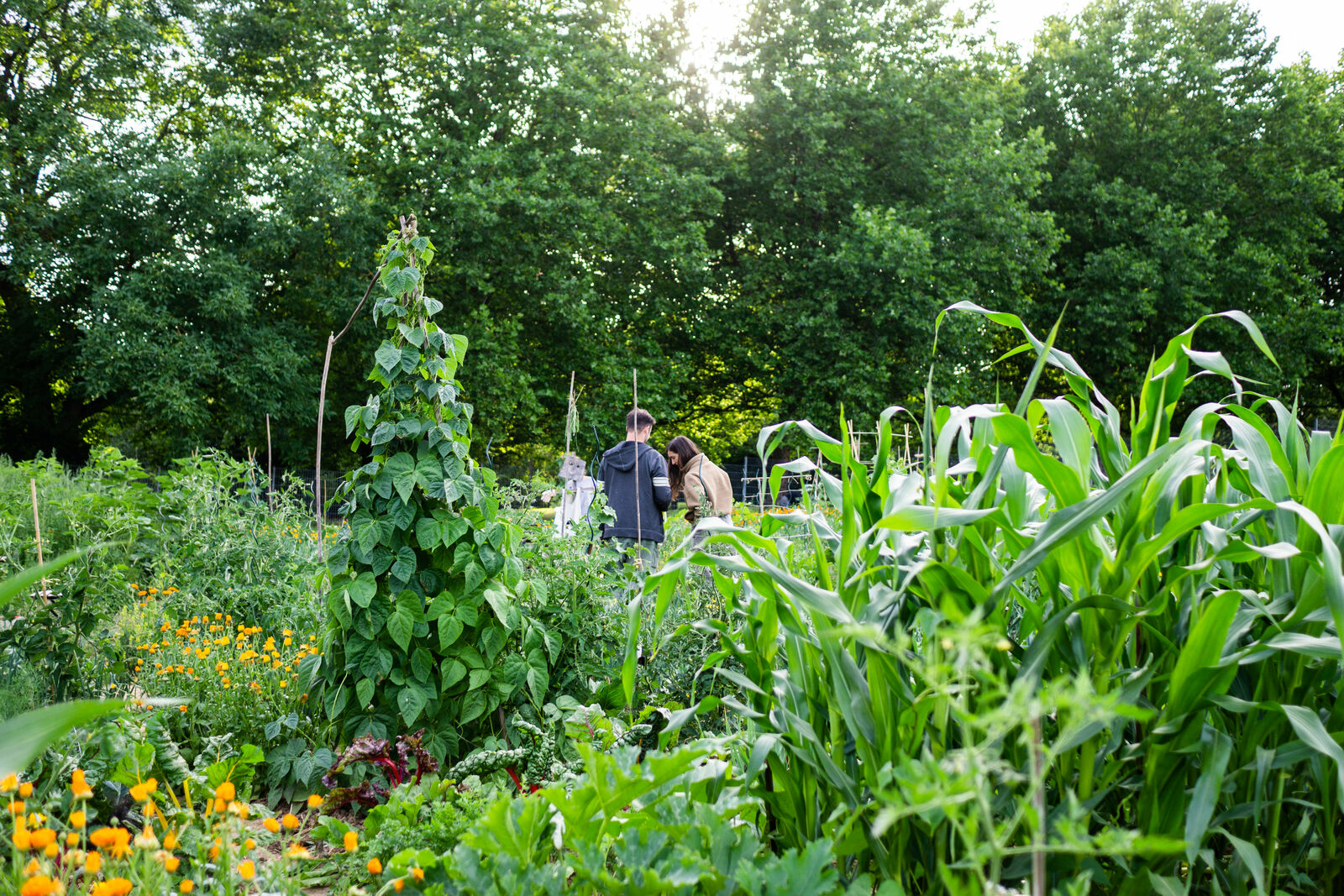
Companion Planting With Beans: What (Not) to Plant With Beans?
Beans are easy-care plants for gardening and good partners in companion planting. There are many different types of beans that differ in shape, color and growth. They bind nitrogen in the soil. This ensures that the nutrients in the soil are not depleted. In this article you will find an overview of companion and antagonistic plants for beans, succession cropping & crop rotation as well as sample planting plans with beans.
This Article Contains:
- Growing Beans in the Garden: Location & Soil
- Companion Planting With Beans
- Companion Plants for Beans (By Variety)
- What Not to Plant Next to Beans?
- Companion Planting: A Table
- Succession Planting & Crop Rotation for Beans
- Planting Plan for the Bean Bed
- Frequently Asked Questions About Beans in Companion Planting
Quick Overview
What to Plant With Beans?
- Beans go well with corn and pumpkin because together they form a so-called "three-sister planting" (also known as milpa) and complement each other perfectly . Savory, cucumbers, cabbage, chard, lettuce, celery, spinach and tomatoes are also good companions for beans.
- Beans are ideal planting partners, especially next to heavy feeders such as pumpkin plants, tomatoes and cabbages, as they bind nitrogen from the air in the soil.
- Peas, fennel, garlic and onions do not do well next to beans as they interfere with each other and attract similar diseases.
Growing Beans in the Garden: Location & Soil
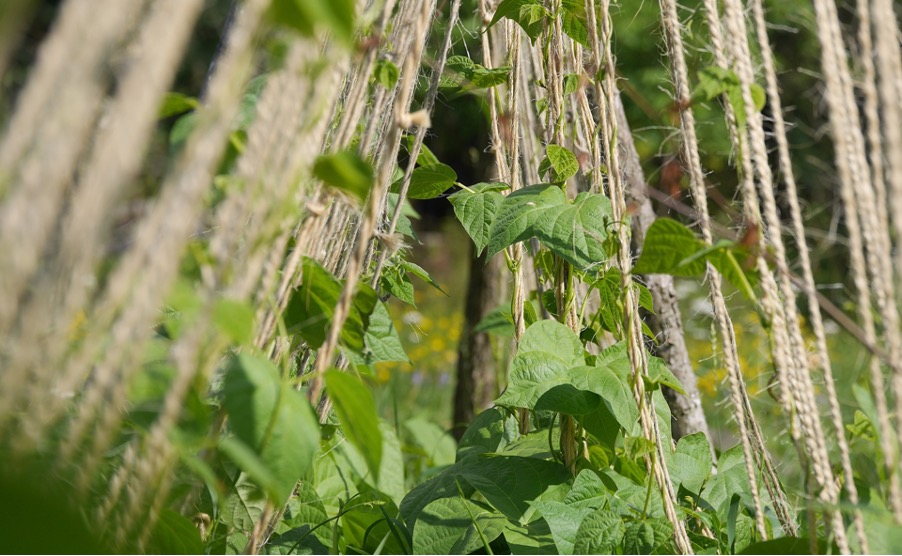
Beans are part of the legume family (Fabaceae) and are an easy crop to grow in the garden. However, they are sensitive to frost and should only be sown in the bed in May after the last frosts. They feel most at home in medium-heavy, loose soil. The location should be sunny to semi-shady. They like it moist, but you should avoid waterlogging. You can sow them in rows 30 - 40 cm/11,8 - 15,7 in apart or in a cluster (5-8 beans in a circle 10 cm/3,9 in apart) - around a pole, corn plant or similar in the case of runner and fire beans.
Companion Planting With Beans
Beans are very good partners in a mixed crop due to their nitrogen-fixing properties. Beans are particularly beneficial in combination with heavy feeders, as they supply the companion plants with extra nitrogen. They develop deep roots and therefore go well with shallow-rooted plants. Like other vegetables, they should not be planted directly next to plants from the same family.

Want to Know More About Companion Plants for Beans?
With our bed planner, you can easily plan a colourful mixed crop. Good and bad neighbours are displayed directly and you get tips on succession planting and crop rotation!
Plan Your Bed NowCompanion Plants for Beans (By Variety)
Companion plants for beans include savory, strawberries, cucumbers, cabbage, kohlrabi, beet, lettuce, celery, tomatoes, potatoes, lettuce and leaf lettuce. As the different types and varieties of beans have different growth forms (climbing & bushy), you will find companion plants listed by bean variety in the next sections:
Bush Beans: Companion Plants
Radishes, cabbage, spinach, celery and chard are good bed partners for bush beans. Cabbage, spinach and chard have different nutritional needs, which reduces competition for resources. Celery improves soil structure and helps retain moisture, while radishes loosen the soil and provide space for the roots of the beans.
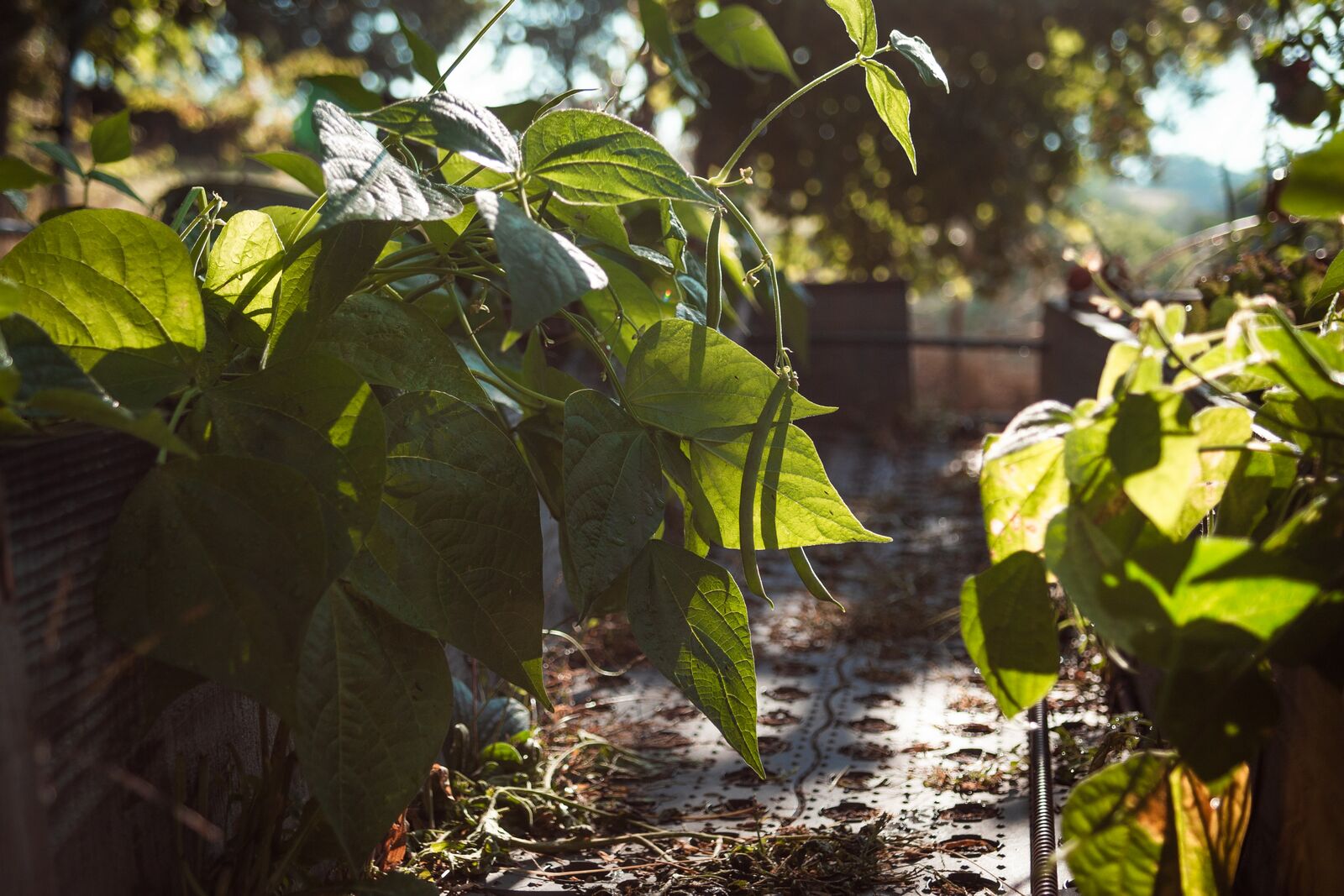
Planting Tomatoes and Beans Together
Tomatoes are companion plants for bush beans, they protect each other from pests and promote the growth of the other plant. As a good companion, basil can also keep pests such as aphids away from beans and tomatoes. When planting tomatoes and beans next to each other, you should pay attention to the growth habit of the selected varieties, otherwise they may take up space from each other. There are bushy and climbing varieties of both beans and tomatoes. Therefore, plant varieties together that complement each other in their growth habit: bushy beans with vine tomatoes or vice versa.
Companion Planting With Runner Beans & Fire Beans
Pumpkins, corn, lettuce and cucumbers are companion plants for runner and fire beans, they support each other and help to ward off pests:
- Pumpkin provides shade with its large leaves, which protects the soil from drying out. Its prickly stems can serve as a natural barrier against slugs and snails.
- Corn serves as a natural support for the climbing pole and fire beans, while the beans increase the nitrogen content in the soil, which benefits the corn plants.
- Lettuce has a shallow root zonethat covers the soil and retains moisture. Can serve as a catch crop and protect the soil from weeds.
- Cucumbers have similar light and moisture requirements but do not compete for the same nutrients.
Pro Tip:
Instead of corn, you can also use sunflowers as a climbing aid for beans. Make sure that the plants are given a little head start in front of the beans so that they don't bend under the weight of the beans.
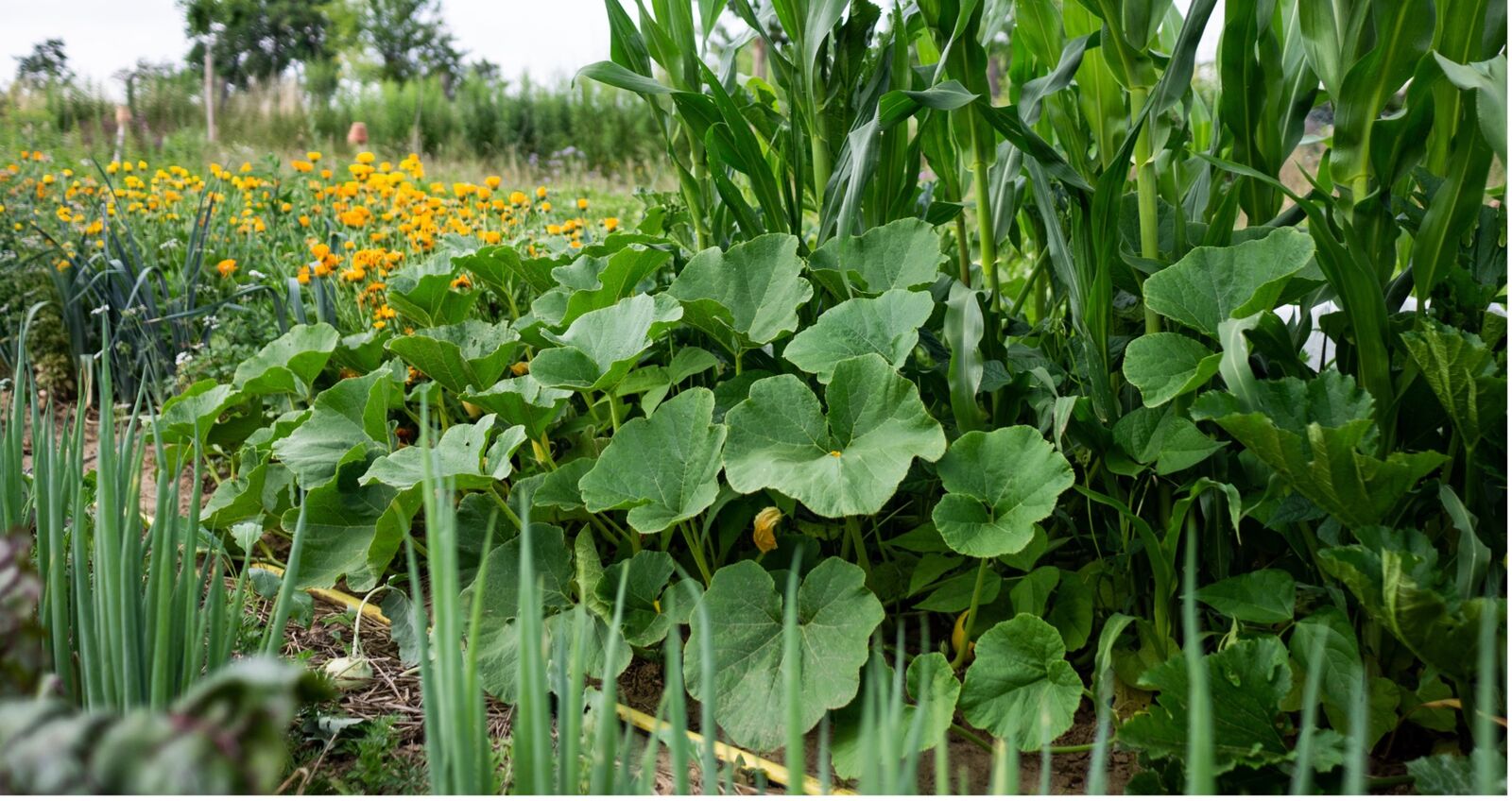
Planting Broad Beans in a Mixed Crop
- Carrots loosen the soil. They have different nutrient requirements to beans and therefore do not take nutrients away from each other.
- Lettuce has a short growing season and can be planted outside early. This complements the broad beans, which can also be cultivated early. The ground cover of the lettuce retains moisture in the soil and suppresses the growth of weeds.
- Beet ensures a loose soil structure. It requires different nutrients than beans, so they complement each other well.
Savory Against Pests & Diseases
Savory is helpful for bean beds because it emits fragrances that keep pests such as bean flies, bean aphids, carrot flies and moths away. It also has antimicrobial and fungicidal properties that reduce the occurrence of diseases. When the herb starts to flower, it also attracts beneficial insects that support your garden. It even improves the taste of your beans.
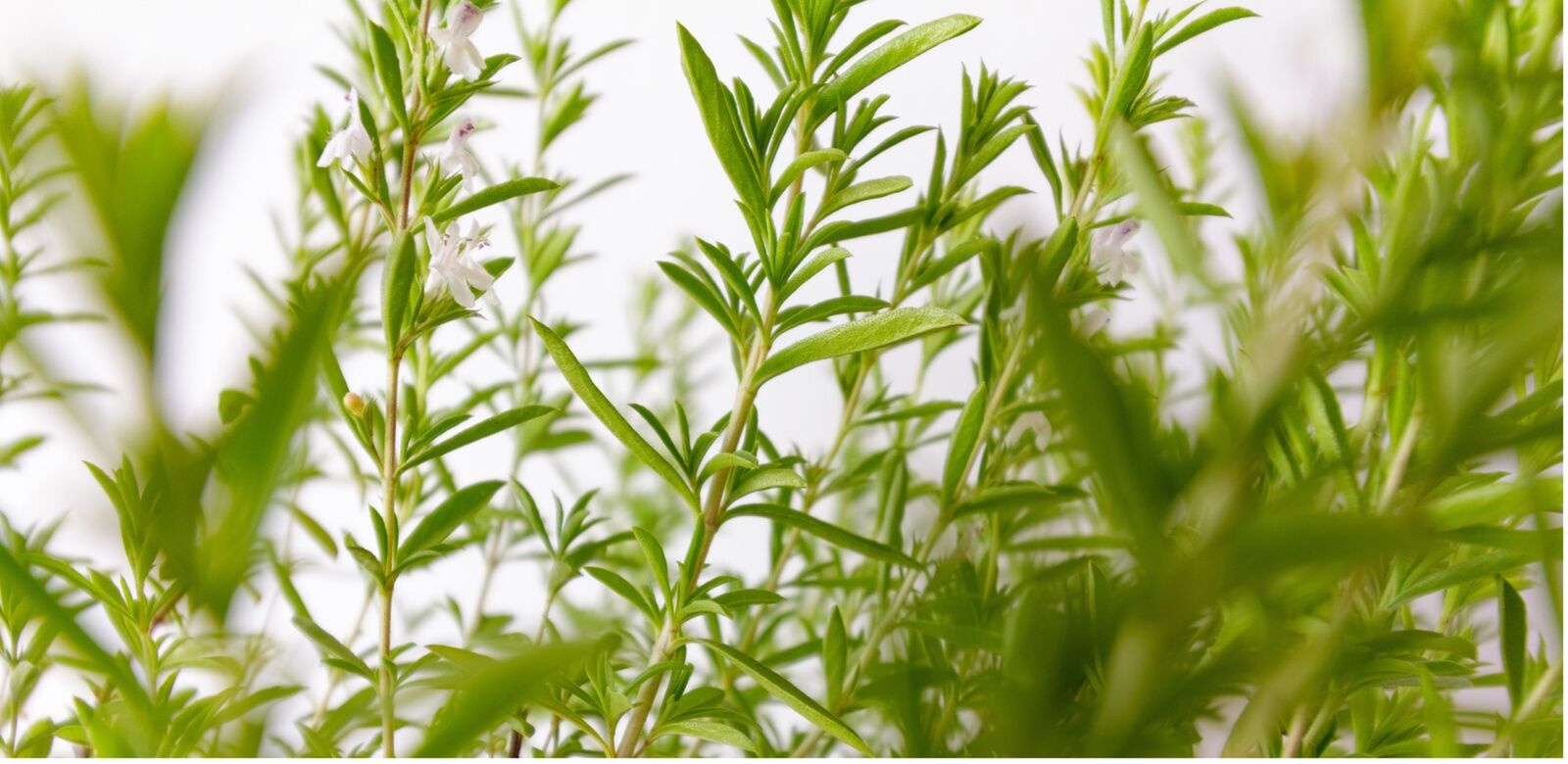
What Not to Plant Next to Beans?
Antagonistic plants for beans are peas, fennel, garlic, leeks and onions. Peas attract similar pests and diseases, increasing the risk of infestation if you plant them next to beans. Fennel secretes chemical substances that restrict the development of surrounding plants. Garlic, leeks and onions compete with beans for nutrients and attract similar pests.
Companion Planting: A Table
A companion planting table will help you to find the right plant combinations for your garden to create optimal conditions. Here you will find a list of the companion plants and antagonistic plants for beans.
| Companion Plants (Bush Beans) | Companion Plants (Runner Beans & Fire Beans) | Companion Plants (Broad Beans) | Antagonistic Plants |
|---|---|---|---|
| savory | endive | kohlrabi | peas |
| strawberries | cucumbers | lettuce | fennel |
| cucumbers | nasturtium | spinach | garlic |
| potatoes | potatoes | potatoes | leek |
| cabbages (Kohlrabi, etc.) | cabbages (Kohlrabi, etc.) | onions | |
| beetroot | pumpkin | ||
| lettuce | maize | ||
| celery | lettuce | ||
| tomatoes | tomatoes | ||
| potatoes | zucchini |
Succession Planting & Crop Rotation for Beans
For most crops, a cultivation break of at least 3 years between plant families on the same site is recommended. According to some gardeners, beans are self-compatible. This means that you can grow them again in the following years in the same place where they were previously planted. However, pay attention to whether diseases and pests occur more frequently . If this is the case, it is best to take a break of several years. If you rotate your beds every year, the beans will automatically move with them anyway. You can find out more about this topic in our article on Succession Planting & Crop Rotation.
Succession Planting: What to Plant After Beans?
After beans, you can plant staple crops such as cabbage, pumpkin or nightshade plants. As beans bind nitrogen in the soil, these crops then benefit from the better nutrient supply in the soil. This helps them to grow and ensures that your soil is not too depleted.
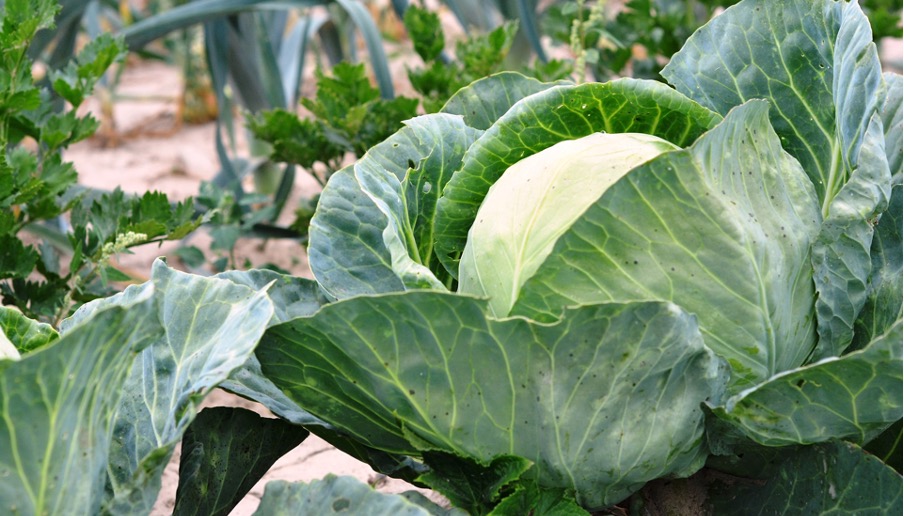
Crop Rotation: Beans as Green Manure
On the other hand, beans are also very well suited as a catch crop for heavy feeders, as they can be used as green manure to enrich the soil with nitrogen and improve the soil structure. It generally makes sense to rotate between strong, medium and weak crops to keep your soil healthy.
Planting Plan for the Bean Bed
In the planting plan for 'Old bean varieties' by Patrick Kaiser, you will find runner beans, bush beans and broad beans together in one bed. Bush beans and runner beans can be grown outside from May, but broad beans (also known as field beans) can be sown outside from March. You can find an example plan for broad beans at Annabell's broad bean bed.
Growing Bush Beans in a Raised Bed
Bush beans are well suited to growing in raised beds as they produce a good yield in a small space and can be combined well with other plants. In my experience, growing bush beans in raised beds with cucumbers, kohlrabi and lettuce has proved very successful. They grow very well in our covered raised bed and are protected from many pests.
The cucumber can climb up a trellis and doesn't need much space in the bed. Bush beans, kohlrabi and cucumber support each other's growth and don't take up any space. You can plant lettuce, radishes and spinach as pre-crops. Garlic, onions and lamb's lettuce can be planted in the bed as secondary crops. The cucumber plant is best grown in advance so that you can harvest the first cucumbers as early as July. You can sow the remaining vegetable plants directly into the bed.
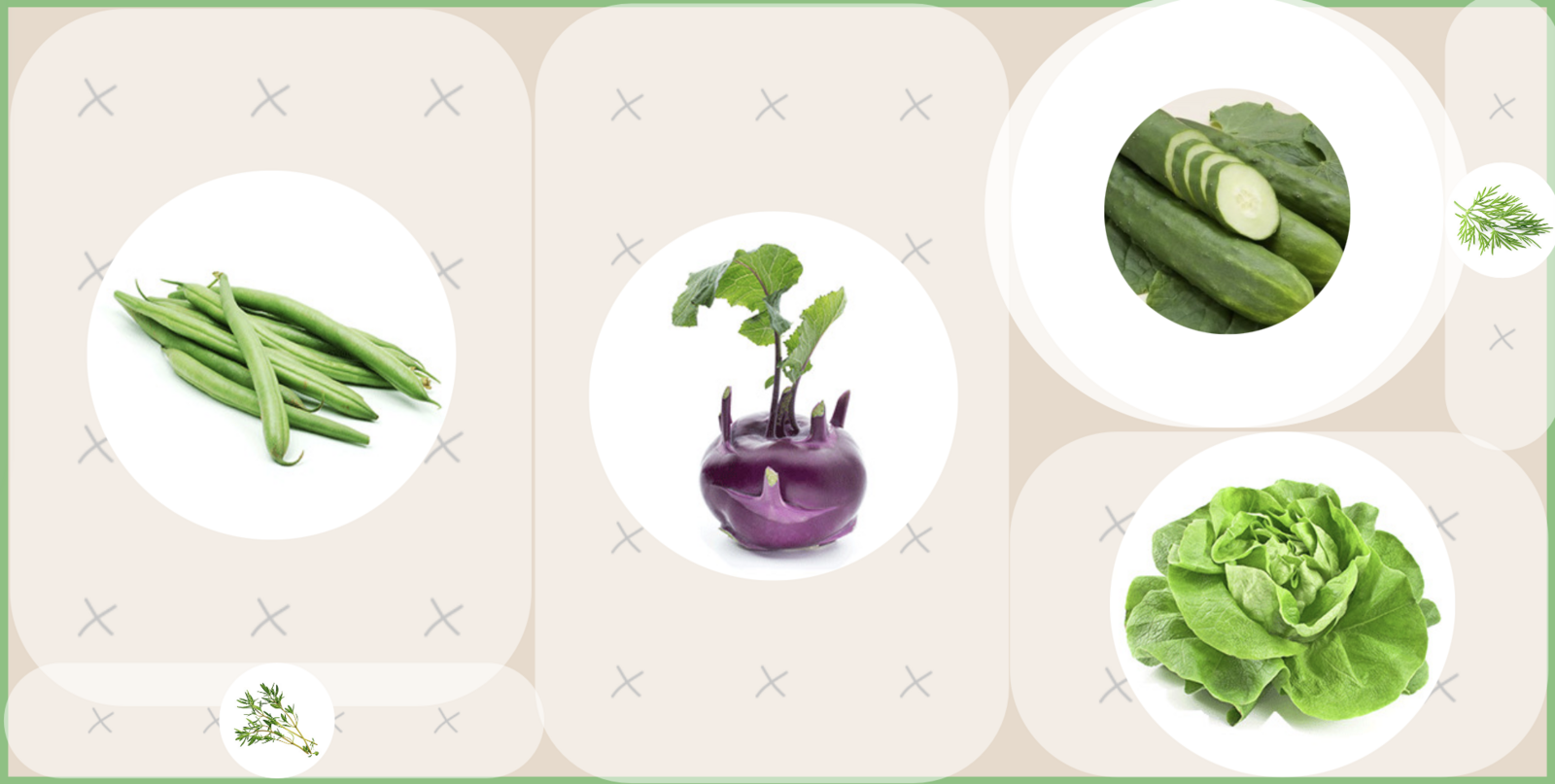

Milpa Bed With Runner Beans or Fire Beans
A milpa bed is a traditional bed planting in which maize, pumpkin and beans (runner or fire beans) are grown together to support each other and make optimum use of the soil and space . You can find more information about the milpa bed and an example planting plan in our articles Creating a Milpa Bed and Marie's Milpa Bed.
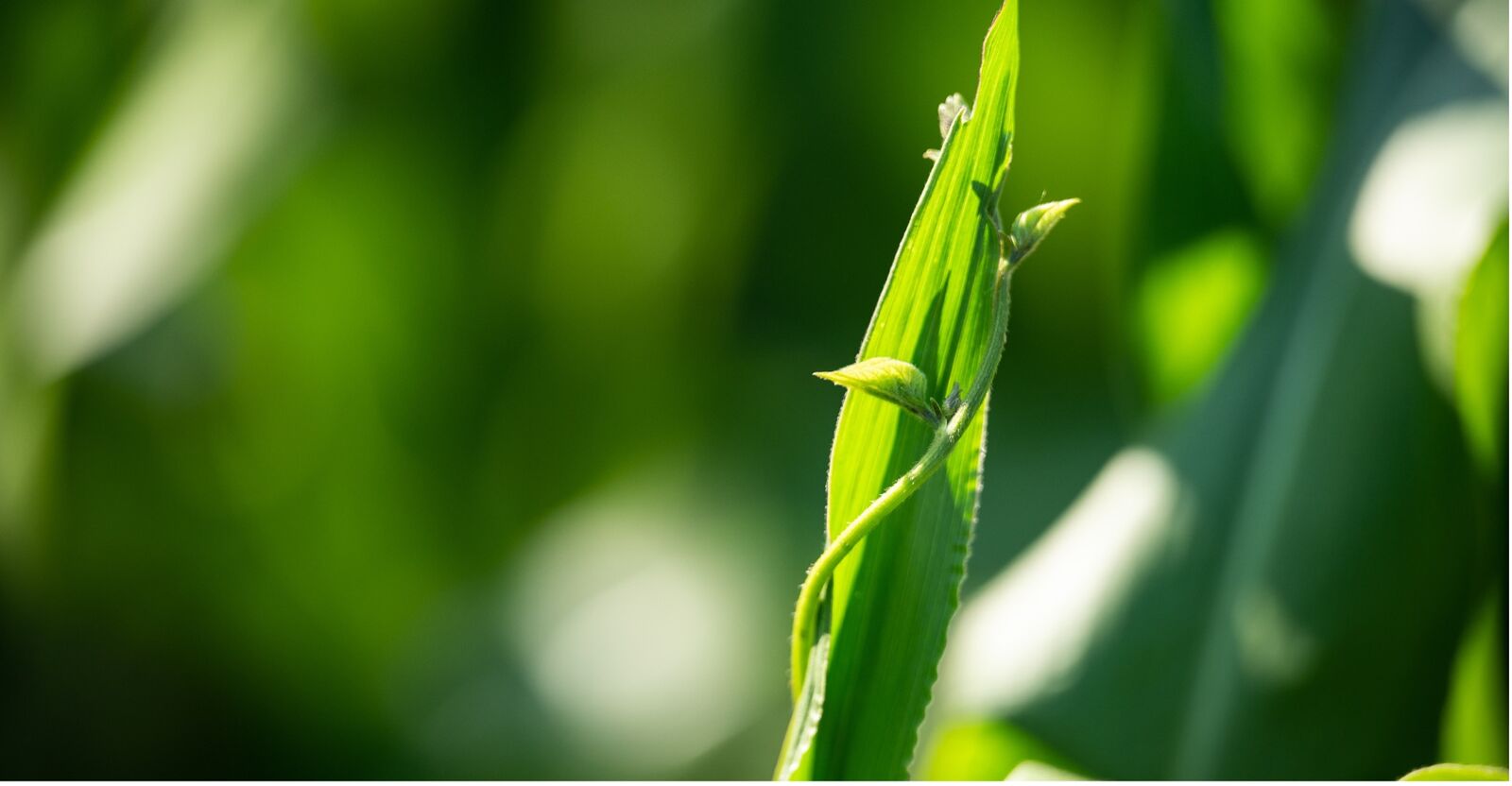
If you have any questions or comments, please write to us at magazin@fryd.app. Would you like to receive helpful gardening tips all year round and plan your own beds optimally? Then register here or download the Fryd app for Android or iOS.
Fryd - your digital bed planner
Marielena
Current Topics in the Community

#red , #tuesday
Show 1 answer
Liked 2 times
#testpostcount

Dec 2025
Popular Articles

Companion Plants for Carrots: What (Not) to Plant With Carrots

Companion Plants for Celery : What (Not) to Plant With Celery?

Strawberry Types: List of Best Strawberry Varieties

Companion Planting With Strawberries: Companion Plants and Planting Plan

Basil Varieties & Types at a Glance

What to Plant With Cabbage: Good and Bad Companion Plants

Fertilizing Strawberries: Home Remedies & Natural Fertilizers at a Glance

Growing Sweet Potatoes: Tips on Cultivation & Companion Plants

Companion Plants for Kitchen Herbs: Chives, Parsley & Co

What Herbs Can Be Planted Together?
FAQ
Beans get along well with corn and pumpkin because together they form a so-called "three-sister planting". Savory, cucumbers, cabbage, chard, lettuce, celery, spinach and tomatoes are also good neighbors for beans.
What shouldn't you plant next to beans?
You should not plant peas, fennel, garlic and onions next to beans, as they can have a negative effect on bean growth.
Can you always plant beans in the same place?
Beans are considered by some gardeners to be self-tolerant and can be grown in the same place as long as there are no diseases or pests. Ideally, however, you should leave at least 3 years between cultivation.
What goes well with bush beans in the garden?
Basil, radishes and tomatoes go well with bush beans, as they make optimum use of the soil and the plants support each other. You can also plant cabbage, chard, celery or spinach next to bush beans.
What is not compatible with runner beans?
Runner beans do not get along well with onions and garlic, as these can impair their growth and reduce yields. Instead, you can grow plants such as pumpkin, corn, lettuce or cucumbers next to runner beans.